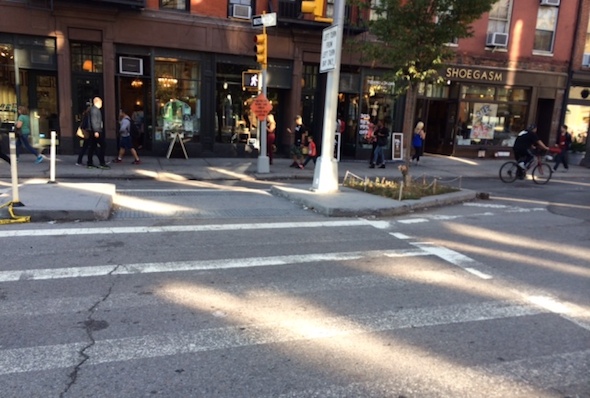
As Fifi Rodriguez walks down Tenth Avenue in Manhattan, the buses, cars and bikes make it daunting for her to cross to the other side. Rodriguez is a senior citizen and resident of Encore Residence Section 8 Housing, and the gridlock conditions make it almost impossible for her, and the approximately 900,000 senior citizens living in her Clinton neighborhood, to maneuver the streets.
In 2008, the Safe Streets for Seniors Project was established to report dismal conditions for senior pedestrian traffic in 25 areas in Manhattan, according to the New York City Department of Transportation website. In September 2012, work was completed in the Midtown West section, near Rodriguez’s home. Several major intersections – where 23rd, 34th, 42nd streets and Broadway meet 7th, 8th and 9th avenues – received improvements, including bright street markings to prevent cars from turning close to the street edge, increased time on signals to allow pedestrians to cross, safety islands between traffic lanes and narrowing of driving lanes.
But Rodriguez and other senior citizens living in her senior citizen residence believe there is still work to be done, particularly along 10th Avenue.
“I have bad legs, heart disease and asthma,” Rodriguez said. “The roads were nice up on the East Side, where I used to live, but here the roads are awful. I ride a scooter and I have to be careful through the holes and pavement of the streets. I also have to be careful when I have my walker because cars don’t care about senior citizens crossing the street on 10th Avenue.” Rodriguez was unaware of the Safe Streets program.
John Mudd, president of the Midtown South Community Council, is optimistic about the success of the increased safety measures. “The streets are safer,” he said. According to NYC.gov, accidents are down by 84 percent at the intersection of 7th Avenue and 23rd Street and fatalities are down 93 percent.
In July of this year, several members of Community Board 4, which represents the neighborhoods of Clinton and Chelsea, sent a letter to the New York City Department of Transportation requesting assistance in improving the safety of intersections on Tenth Avenue. It included the installation of a left turn signal from Tenth Avenue to West 47th Street, which was outside the scope of Safe Streets.
Some relief could come from a bill signed in August 2014 by Governor Andrew Cuomo, which would lower the speed limit in New York City from 30 miles per hour to 25 miles per hour.
In New York City, approximately 4,000 people have been killed in traffic-related fatalities. Being hit by a car is the second leading cause of injury-related deaths for seniors in a city where pedestrian deaths make up 52 percent of fatalities.
In the meantime, more work on Safe Streets is underway in other neighborhoods. From 2012 to 2013, the program was expanded to 12 new areas in the city with a high concentration of senior centers.